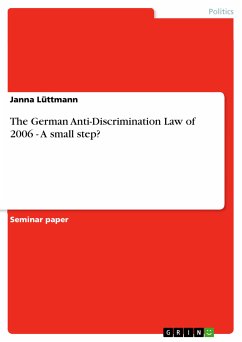Seminar paper from the year 2014 in the subject Politics - Other International Politics Topics, grade: 1,1, University of Pavia, language: English, abstract: During the last 25 years, starting from the fiftieth anniversary of the anti-Jewish laws in Fascist Italy, there has been an increasing interest in the Italian history at the beginning of the twentieth century. Many political and historical scientists thereby focussed on one main question: What developments led to the enormous radicalization policy and the progressive anti-Jewish movement under Mussolini? As it will be outlined in this paper, Italian researchers gave an answer to this by primarily analyzing the national history, whereas political scientists and historians from Germany, England, and the United States based their studies on a comparison between the situation in Fascist Italy and Nazi Germany. The Italian system, in opposite to the regime in Germany, turned radically against the Jews not until 1938, after a long period of political acceptance. Due to the suddenness of this attitude change, researchers saw the developments in Italy as a result of bilateral dependencies and continuous force coming from Germany. As the following comparison will underline, however, the Italian anti-Semitism movement arose from internal, historically constituted factors, and it shows evident differences to the developments in Germany. This paper looks in detail at the period between 1933-1945 in both political systems, as the most decisive decisions were taken within those years.









